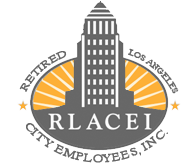
LACERS BOARD UPDATE
By Michael R. Wilkinson, LACERS Commissioner
Email: MikeWilkinson4LACERS@gmail.com
O
ne of the most important tasks the LACERS board performs is to review its asset allocation to the various investments that provide most of the funding for the pension plan. The plan is supported by active member contributions, contributions by the City of Los Angeles and investment returns.
LACERS periodically reviews the asset allocation and makes needed changes based on an asset liability study to determine the projection of liabilities, including benefit payments, and an estimate of what the plan expects to earn and contribution levels. Studies have shown that the performance of the plan is based mostly on the performance of the asset classes and thus the asset allocation rather than the skill of individual money managers.
As you may know, the financial hucksters are always pitching that wonderful investment that produces high returns in all market conditions without risk. One of the recent examples of that type of investment was Bernie Madoff’s Ponzi scheme. Those investment promises can never be met because no investment excels all the time.
However, the LACERS Board considers the risk and return characteristics of a mix of investments that are expected to provide returns to support the plan and weather the cycles of the financial markets. One of the techniques used is correlation. If one investment class follows the ups and downs of another class it is highly correlated. If an investor picks uncorrelated investments they tend to move in opposite cycles and reduce risks. However, in some markets even normally uncorrelated investments can move together.
LACERS is a long-term investor and avoids trading in and out of asset classes to “time the market.” Experts agree that the best way to produce long-term returns is to diversify. Over the years LACERS has invested in a mix of stocks, bonds, real estate and private equity, among other investments. The current goal is to meet an assumed rate of overall investment returns of 7.0 percent over the long term.












